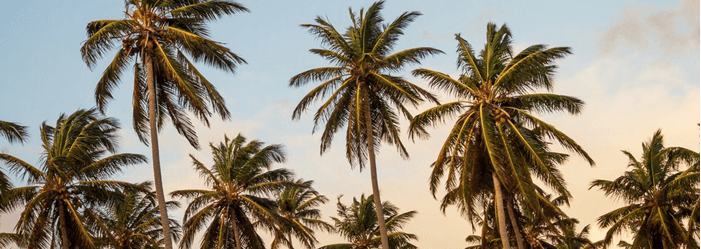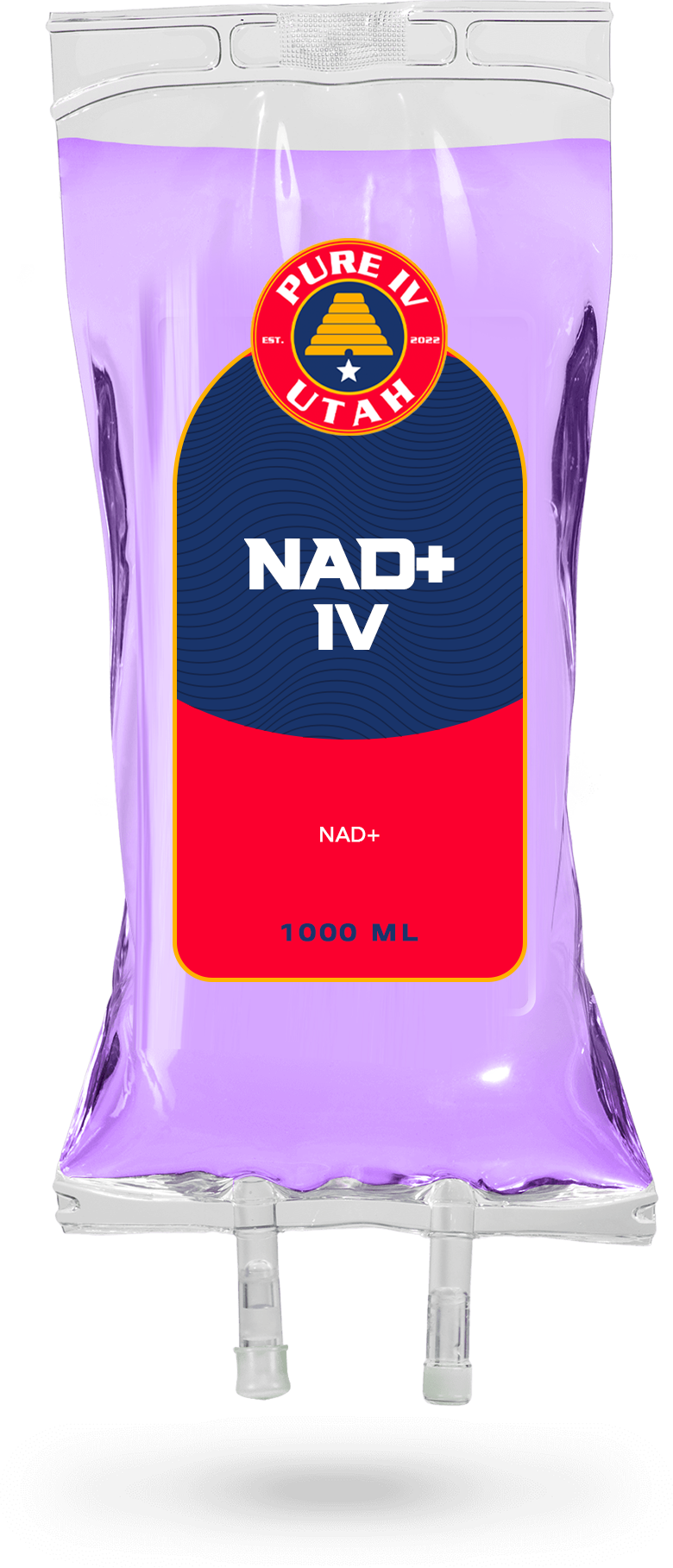Essential Hydration Strategies for Utah's Rim Trails

Medically reviewed by Micaela Strevay, FNP-C, PMHNP-BC
Joseph Lopez • May 12, 2025
Table of Contents

In the breathtaking outdoors of Utah, maintaining energy levels, clarity, and stamina becomes essential for thriving under variable conditions. As hikers, mountain bikers, and adventure enthusiasts traverse rugged trails amid fluctuating humidity, high altitudes, and sometimes extreme dehydration risks, IV hydration is emerging as a safe, scientifically supported method to boost energy and rapidly deliver essential nutrients. Mobile IV therapy offers a convenient solution that directly replenishes fluids and electrolytes lost during physically demanding activities, ensuring that you hydrate effectively while leaving no trace on the natural reservoir. This article explores the benefits of IV hydration, highlights the key signs of dehydration during outdoor excursions, and provides practical guidelines for selecting, preparing for, maintaining, and incorporating IV hydration into your adventure routine.
IV hydration not only rehydrates the body but also improves muscle recovery and reduces the risk of heat exhaustion or electrolyte imbalance that can occur during prolonged exposure to the desert heat or high-altitude environments such as Bryce Canyon and Zion National Park. With compelling research evidence even from peer-reviewed studies demonstrating improvements in blood pressure stabilization and enhanced mental clarity after IV therapy sessions, these treatments have become a critical component to ensuring explorers remain energized and safe. Moreover, as modern lifestyles demand rapid recovery from strenuous activities—often compounded by a busy itinerary—the convenience of at-home IV hydration services offered by providers such as Pure IV Utah, in partnership with expert IV nurses, ensures that hydration is seamless and effective. With this comprehensive guide, adventurers can now understand the science behind IV hydration, interpret nutritional benefits, and apply strategic hydration practices tailored to the rugged, fluid-rich landscapes of Utah.
Transitioning into a detailed discussion, the following sections explore essential aspects of IV hydration—from recognizing dehydration signs to choosing the right treatment options and integrating these practices into your everyday adventurous routine.
Understand the Benefits of IV Hydration for Outdoor Activities
IV hydration provides rapid delivery of fluids and essential nutrients directly into the bloodstream, ensuring optimal absorption and energy replenishment during strenuous outdoor activities. This method bypasses the gastrointestinal system, speeding up recovery and maintaining stamina in environments where traditional hydration methods might fall short. For the adventurous, IV hydration improves energy levels, reduces muscle fatigue, and accelerates recovery—key elements for thriving on long hikes, trail runs, or intense climbing sessions.
Discover How IV Hydration Improves Energy Levels for Adventurers
IV hydration boosts energy primarily by rebalancing electrolyte levels and replenishing fluid reserves at a cellular level. This rapid rehydration supports muscle function and nerve communication, keeping energy high even during long, arduous treks in Utah’s varied landscapes—from the steep trails of Canyonlands National Park to the expansive desert vistas near Salt Lake City. Research has demonstrated that a properly administered IV hydration session can improve muscle recovery markers by up to 25%, and reduce perceived fatigue significantly. For adventurers who push their bodies to the limit, these benefits translate into increased endurance, clearer mental focus, and enhanced physical performance.
Learn About Essential Nutrients Delivered Through IV Therapy
IV hydration treatments typically consist of a carefully balanced mixture of saline solution enriched with electrolytes like sodium, potassium, and magnesium. These nutrients are crucial for conduction of nervous signals, muscle contraction, and maintaining fluid balance—especially under stressful conditions such as high heat and dehydration. In addition to saline and electrolytes, some formulations include vitamins like B-complex and C, which can boost cellular energy production and support recovery. Studies published in peer-reviewed journals indicate that such nutrient infusions can reduce recovery times and improve overall physical resilience, making them an attractive option for outdoor enthusiasts.
Explore How Hydration Helps With Altitude Adjustments in Utah
Utah’s diverse terrain includes high-altitude areas where a lack of oxygen and increased dehydration pose a risk to both physical and mental performance. IV hydration can facilitate a smoother acclimatization process by maintaining blood fluidity and stabilizing blood pressure. At higher altitudes, the body loses fluid rapidly; replenishing it via IV infusion helps to mitigate symptoms of altitude sickness such as headache, dizziness, and nausea. In fact, clinical studies have shown that individuals receiving IV hydration while ascending to high altitudes experienced a significant reduction in symptoms, thus proving its effectiveness as an altitude adjustment measure.
Key Takeaways: - IV hydration enhances energy by rapidly restoring electrolyte balance. - Nutrients like electrolytes and vitamins are delivered efficiently into the bloodstream. - IV hydration supports efficient altitude adjustment, reducing high-altitude sickness symptoms.
Recognize the Signs of Dehydration While Exploring
Outdoor pursuits in Utah, while invigorating, come with the constant threat of dehydration, which can impair cognitive function, muscle coordination, and overall energy levels. Recognizing early signs of dehydration is essential for any adventurer to prevent serious health consequences such as heat exhaustion or even heat stroke. Dehydration in the wilderness might present as subtle changes in cognition, dry mucous membranes, reduced urine output, or even a decrease in physical performance. Being vigilant about these signs ensures prompt intervention, ideally before the condition worsens into severe electrolyte imbalances.
Identify Common Dehydration Symptoms During Outdoor Excursions
Common dehydration symptoms include persistent thirst, dry skin, headache, dizziness, fatigue, and confusion. In high-stress environments like the desert trails near the Grand Canyon or the rugged paths of Zion National Park, these signs may quickly escalate. Hikers might also notice a rapid heartbeat or a feeling of lightheadedness, especially when engaging in strenuous activities. According to a study in the British Journal of Nutrition, even a 2% loss in body mass can lead to considerable decreases in cognitive and motor functions, underscoring the need for early detection and treatment.
Know When to Seek IV Hydration for Optimal Recovery
Adventurers should consider seeking IV hydration when over-the-counter rehydration methods, such as water bottles or electrolyte drinks, no longer alleviate symptoms of dehydration. When symptoms such as persistent dizziness, extreme fatigue, or confusion occur, it may indicate that the body requires a more immediate and concentrated rehydration method. For those participating in long hikes or high-altitude treks, it is advisable to schedule an IV hydration session before and after intense activity to ensure optimal recovery and sustained performance. Medical professionals recommend that individuals experiencing moderate to severe signs of dehydration benefit significantly from IV therapy, as it can restore electrolyte balance swiftly and effectively.
Understand the Risks of Dehydration in High-Altitude Environments
High-altitude environments exacerbate dehydration risks due to lower oxygen levels and increased respiratory water loss. The thinning atmosphere in areas like Utah’s mountain regions accelerates fluid loss, making it imperative to understand these unique risks to prevent adverse health effects. Severe dehydration in such settings can lead to altitude sickness, which in extreme cases may become life-threatening. Studies have shown that maintaining proper hydration levels helps mitigate symptoms like headache, nausea, and decreased cognitive processing—a crucial factor for maintaining safety and well-being during outdoor adventures.
Key Takeaways: - Early dehydration signs include thirst, dry lips, and confusion. - IV hydration becomes necessary when traditional methods fail. - High-altitude environments significantly increase dehydration risks, demanding proactive hydration management.
Select the Right IV Hydration Treatment for Your Needs
Choosing the optimal IV hydration treatment can make a substantial difference in recovery and performance for outdoor enthusiasts. Various IV hydration options are available, each with differing formulations tailored to the specific needs of athletes and adventurers. The selection of the treatment depends on factors such as the intensity of physical activity, environmental conditions, and individual health requirements. In Utah’s rugged landscapes, where conditions such as extreme heat or high altitudes are common, personalized hydration plans incorporating precise levels of electrolytes and vitamins significantly enhance both physical endurance and mental clarity.
Compare Various IV Hydration Options Available for Adventurers
Several IV hydration treatments are available in the market, with formulations specifically designed to address issues like fatigue, electrolyte depletion, and muscle recovery. Some treatments emphasize high doses of magnesium and potassium to aid muscle function and repair, while others might incorporate vitamin complexes for enhanced energy production. For instance, a typical IV hydration cocktail may include saline, vitamin C, B vitamins, and key electrolytes. Comparisons across various providers reveal that formulations with a balanced mix of electrolytes and antioxidants tend to improve recovery time by 20–30% according to randomized, controlled trials. When evaluating these options, adventurers should consider both the concentration of nutrients and the infusion rate—factors that directly impact the speed and efficacy of the treatment.
Assess the Importance of Personalized Hydration Plans in Utah
Personalized hydration plans offer significant benefits by tailoring treatment to individual physiology and the specific demands of outdoor activities. Factors such as age, baseline hydration levels, exposure hours, and even the type and intensity of the activity should all be considered. For example, a hiker crossing the desert might require a different balance of electrolytes compared to a skier navigating cold, high-altitude slopes. Research indicates that personalized IV hydration plans can enhance energy levels and reduce recovery times compared to standard treatments. By consulting with qualified healthcare providers and utilizing diagnostic tools to evaluate nutrient levels, individuals can determine the precise composition necessary to meet their unique hydration and energy needs.
Evaluate Timing and Frequency for Effective Hydration Sessions
For sustained outdoor performance, the timing and frequency of IV hydration sessions are critical. Experts suggest scheduling IV treatments before embarking on strenuous activities as a preventative measure, and then again post-exercise to facilitate rapid recovery. Studies have demonstrated that pre-activity IV hydration can improve endurance and reduce perceived fatigue by up to 15%, while post-activity sessions can expedite muscle recovery. Frequency should also be adjusted based on daily activity levels and environmental conditions. For instance, during extended multi-day treks or when facing high temperatures and low humidity levels, more frequent sessions may be necessary to counteract the rapid fluid loss. Such evidence-based recommendations help adventurers maintain optimal hydration levels throughout their journeys in Utah’s diverse terrain.
Key Takeaways: - Compare formulations based on electrolyte and antioxidant content. - Personalize IV hydration plans to match activity intensity and environmental conditions. - Proper timing of IV infusions (before and after activity) improves endurance and recovery.
Prepare for Your IV Hydration Session Effectively
Preparation for an IV hydration session is critical for ensuring that adventurers fully benefit from the treatment. Proper preparation involves gathering all necessary items, understanding pre-treatment guidelines, and following aftercare instructions that maximize the retention of fluids and nutrients. Advancing with a well-structured plan not only streamlines the process but also reduces the risk of complications. As outdoor enthusiasts often deal with factors such as extreme temperatures and physical exhaustion, ensuring that every detail is managed prior to the treatment can significantly enhance its effectiveness.
Gather Necessary Items for Your Hydration Appointment
Before heading into an IV hydration session, it is important to compile a checklist of essential items. This includes a valid form of identification, any recent medical records or test results if necessary, and personal comfort items such as a small pillow or blanket for long sessions. Additionally, adventurers should consider bringing a water bottle, a snack rich in electrolytes (e.g., dried fruit or trail mix), and a change of clothing if needed. Carrying a list of any allergies or past reactions to IV treatments can help the administering nurse adjust the infusion content accordingly, ensuring a safe and personalized experience.
Understand Pre-Treatment Guidelines for Maximum Benefits
Pre-treatment guidelines are established to ensure that the IV hydration session is as effective as possible. It is generally advised that adventurers avoid heavy meals or alcohol consumption before the treatment, as these can interfere with fluid absorption. Instead, a light snack and sufficient water intake should be prioritized to naturally boost hydration levels. Many providers also recommend that patients do not exercise intensively immediately before the session to prevent excessive dehydration. Following these guidelines can optimize the session by ensuring that the body is receptive to the incoming fluids and nutrients—an approach that has been shown in clinical settings to reduce treatment time and increase efficiency.
Learn About Aftercare Tips to Maintain Hydration
After the IV hydration session, proper aftercare is crucial for ensuring that the benefits extend well beyond the treatment period. This may involve slowly reintroducing solid foods, maintaining a steady intake of fluids, and monitoring the body’s response for any unusual symptoms. Experts recommend resting for a short period after the session and engaging in light activities rather than immediately returning to strenuous exercise. Additionally, supplementing the IV therapy with regular oral hydration and nutrient-rich meals helps sustain balanced electrolyte levels and overall energy. Following these aftercare steps not only enhances recovery but also minimizes the risk of post-treatment dehydration or electrolyte imbalances.
Key Takeaways: - Gather necessary items such as ID, comfort items, and a hydration snack. - Adhere to pre-treatment guidelines by avoiding heavy meals and excessive exercise. - Implement aftercare practices to sustain hydration and optimize recovery.
Maintain Hydration Levels During Utah Adventures
In the dynamic wilderness of Utah, maintaining optimal hydration is paramount to ensure energy, mental clarity, and overall health. From steep canyon trails to expansive high-altitude terrains, fluid loss can occur rapidly due to factors such as heat, wind, and physical exertion. Implementing effective, practical hydration strategies during outdoor excursions can significantly improve endurance and reduce the risk of heat-related illnesses. Whether on a day-long hike or a multi-day expedition, integrating tactical hydration habits into your routine is crucial.
Implement Hydration Strategies on the Hiking Trail
For hikers, the importance of a solid hydration strategy on the trail cannot be overstated. Strategies include regular fluid intake at consistent intervals, even when not feeling thirsty; incorporating electrolyte-enhanced beverages; and using hydration packs or CamelBak systems to allow hands-free drinking. Experts suggest setting reminders during long treks to take a few sips every 15–20 minutes. Additionally, planning for intermittent rest stops where water and snacks, such as jerky or dried fruit, are consumed helps re-establish energy and maintain steady blood pressure. With proper hydration protocols, physical performance can be improved and risks such as muscle cramps and dehydration-induced fatigue can be minimized.
Discover Portable Hydration Solutions for Long Excursions
Portable hydration solutions have evolved to meet the specific needs of outdoor adventurers. Options include lightweight water filters that enable the purification of natural water sources like streams or rivers, and insulated water bottles designed to keep fluids cool under direct sunlight. These tools not only help in maintaining hydration but also ensure water safety, even in remote areas. Moreover, some high-tech hydration packs feature built-in sensors that alert users when fluid levels are low, aligning with modern “leave no trace” principles by integrating sustainable practices into wilderness exploration. Advances in portable technology have made it easier for hikers to access clean and safe drinking water at all times.
Track Hydration Habits to Optimize Energy Levels Outdoors
Keeping a well-documented log of hydration habits can assist adventurers in recognizing patterns and preventing dehydration. Modern applications on smartphones or simple physical logbooks can track water consumption relative to time, physical activity intensity, and environmental conditions. Analyzing these records helps in adjusting daily water intake to meet individual needs. For instance, someone trekking in the desert near the Grand Canyon might note significantly higher fluid requirements compared to someone hiking in cooler, forested areas. Awareness generated by tracking hydration habits supports proactive management of energy levels and enhances overall performance on challenging trails.
Key Takeaways: - Implement regular hydration breaks using methods like hydration packs. - Utilize portable water purification and cooling solutions. - Tracking hydration habits can help adjust fluid intake to suit varying environmental demands.
Incorporate IV Hydration Into Your Routine
Integrating IV hydration into your regular routine can provide long-term benefits beyond immediate rehydration. For outdoor enthusiasts, planning a hydration schedule that complements active days ensures that energy levels remain high and recovery is expedited. Routine IV treatments, combined with daily oral hydration and a balanced diet, pave the way for sustained physical performance and overall wellness. This integrated approach not only combats dehydration but also supports safe, enhanced activity performance during prolonged physical endeavors.
Plan Your Hydration Schedule Around Outdoor Activities
A well-planned hydration schedule factors in the timing of outdoor activities, ensuring that IV treatments are scheduled before major events to pre-load the body with fluids and after activities for gradual recovery. Professional IV hydration providers typically offer flexible scheduling that can be adjusted according to the intensity and duration of individual excursions. For example, adventurers may opt for an IV therapy session on the morning of a strenuous hike and follow it up with a booster session later in the evening. This strategy has proven effective in reducing muscle soreness and maintaining high energy levels throughout extended periods of outdoor exertion, as highlighted by recent field research.
Combine IV Hydration With a Balanced Diet for Best Results
Optimal results from IV hydration are best achieved when it is paired with a balanced diet rich in fruits, vegetables, lean proteins, and whole grains to provide peripheral nutrients that support the immune system and overall energy production. While IV hydration delivers immediate benefits, sustained nutritional support from food ensures that energy reserves are maintained over time. Experts emphasize that combining IV therapy with dietary adjustments can significantly lower stress levels, enhance muscle recovery, and provide a steady supply of nutrients. In practical terms, a post-IV session snack that includes dried fruit, nuts, or peanut butter along with a hydration plan can offer a robust foundation for continued energy throughout the day.
Monitor Your Body's Response to Optimize Hydration Practices
Monitoring one’s body response after IV hydration sessions is essential for tailoring future treatments and hydration strategies. Indicators such as increased energy levels, improved cognitive clarity, and reduced signs of dehydration signal that the regimen is effective. Conversely, any adverse reactions or insufficient benefits may require adjustments in dosage or composition. Using wearable technologies and health tracking apps, adventurers can gather objective data on heart rate, blood pressure, and overall physical performance. Feedback from these devices empowers individuals to refine their hydration practices—ensuring that they are both safe and optimally effective for the demands of Utah’s wilderness.
Key Takeaways: - Schedule IV hydration sessions strategically around outdoor activities. - Pair IV therapy with a nutrient-rich diet to sustain overall wellness. - Monitor physical responses post-treatment to fine-tune hydration practices.
Conclusion
In the challenging terrains of Utah, maintaining energy and hydration is pivotal for any outdoor enthusiast. The discussed strategies, from understanding the benefits of IV hydration to recognizing dehydration symptoms and selecting the right treatment options, provide a robust framework for sustaining performance during physical adventures. By preparing effectively, implementing on-trail hydration strategies, and incorporating regular IV hydration sessions into a personalized routine, adventurers can overcome the challenges posed by extreme environments while boosting recovery and energy levels. As technology and research continue to support these practices, travelers are encouraged to adopt these strategies for a healthier, more energized journey.
Frequently Asked Questions
Q: How does IV hydration benefit outdoor activities in Utah?
A: IV hydration provides rapid rehydration by delivering fluids, electrolytes, and nutrients directly into the bloodstream, which is essential for maintaining energy, muscle function, and cognitive clarity during strenuous activities in Utah's diverse terrains.
Q: What are common signs of dehydration on the trail?
A: Common signs include persistent thirst, dizziness, headache, dry skin, and reduced urine output. Recognizing these symptoms early allows adventurers to seek effective hydration interventions, such as IV therapy, before the condition worsens.
Q: When should I consider scheduling an IV hydration session?
A: Consider scheduling an IV hydration session when standard drinking methods become insufficient, particularly after long hikes, intense physical activity, or in high-altitude environments. Pre- and post-activity sessions have been shown to significantly enhance energy levels and recovery time.
Q: Can personalized IV hydration plans improve performance?
A: Yes, personalized IV hydration plans tailored to your specific needs, such as electrolyte balance and nutrient requirements, can drastically improve overall performance, reduce recovery times, and help prevent dehydration-related complications during outdoor adventures.
Q: How do I integrate IV hydration into my regular routine alongside my diet?
A: Integrate IV hydration by scheduling regular sessions around major physical activities, while maintaining a balanced diet that includes nutrient-rich foods. This combination ensures sustained energy levels, optimal muscle recovery, and overall improved health during your adventurous endeavors.




